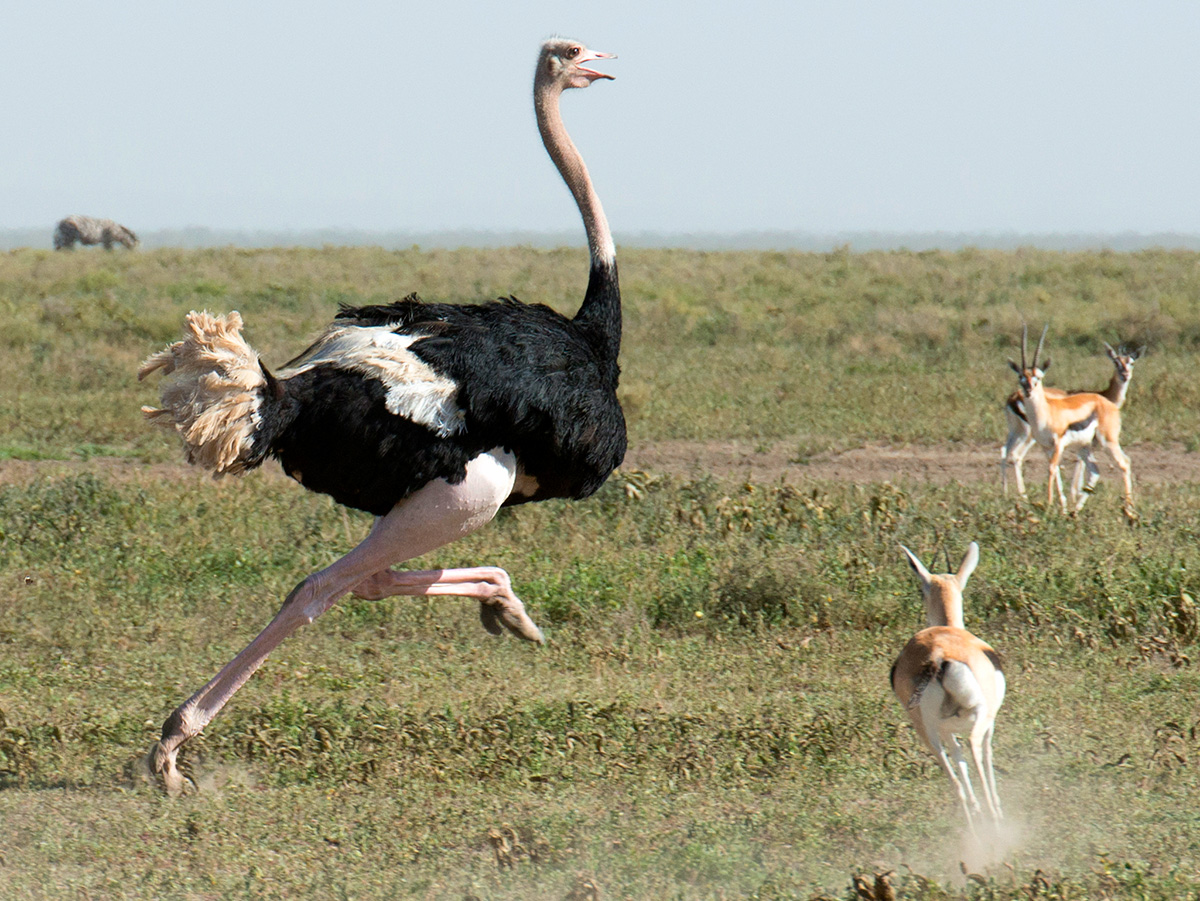
While the IUCN has enlisted the ostrich as a species of Least Concern, one should make a note of the fact that a large part of this population is either found at the reserves or farms. At present, there are more than 2 million ostriches in different parts of the world. In Africa, ostriches have been raised for their eggs, meat, feathers and hide for at least 150 years. The feathers are colorful and are used to make feather dusters. Apart from eggs, its meat, feathers and hide are also sought after in various industries. These shells, which are strong enough to bear the weight of an adult man, are carved, hand painted and engraved to make items which may fetch as high as $150. » Ostrich egg shells are used to make artifacts. Trace elements such as magnesium, manganese, selenium, zinc copper and iron are also found in these eggs. Other than 47% of proteins and 44.3% of fats, these eggs also contain calcium, phosphorus and vitamins like vitamin A, vitamin E, riboflavin and thiamine.

» In terms of nutrition content, an ostrich egg can provide a whopping 2,000 calories. Though it is the smallest when we go by the ratio of the weight of egg to the weight of the bird. With a thickness of 0.06 inches, the ostrich egg is quite strong as well. The color ranges from pearl white to cream. On an average, its weight is close to 3.1 lbs (1.4 kilograms). » An ostrich egg measures approximately 6 inches in length and 15-18 inches in circumference. If the ostrich can elude its predators till its adulthood, it can leave for a period of 40-45 years - considerably long for a bird. On an average, only around 10 percent of the nests survive, but the threat of predators continues even after the eggs have hatched. » In course of the incubation period, which roughly lasts for around 35-45 days, the nests are raided by various predators. While the greyish-brown females blend with the sand during the day, males with their black feathers become virtually invisible in the darkness of the night. The practice comes handy for this species when defending themselves and their nests from predators. » The female ostriches incubate the eggs during the daytime, while the male ostriches do the same at night. Even though 2-7 females lay their eggs in a single communal pit, each female can identify her own eggs. After laying her eggs, the dominant female rejects the eggs of some of the weaker members at the time of covering the pit. » Ostriches are known to lay their eggs in a communal pit, with the dominant female laying her eggs first and others following her. (In favorable conditions, the female can remain productive for 25-35 years.) A hen - female ostrich - can lay 40-100 eggs per year, which roughly amounts to one egg every second day from the mid-March till the mid-August. At 5.9 inches (approx.), ostrich eggs are the largest of any living bird, which doesn't come as a surprise, considering ostrich itself is the largest living species of bird in the world. However, if you consider the size of eggs relative to the size of bird, then ostrich eggs are the smallest. Other than being the largest living bird, the ostrich also boasts of eggs which are the largest of the extant species of birds. Please note: This deposit is the total price and you will not pay any extra when you will pick an ostrich egg up at our farm. The client must pay to reserve the egg and be able to either pick it up at the farm or at various markets in Toronto. Pick up time and location will be arrange with you when you receive a phone call about your egg when is ready for pickup.


If you placed the order for one Ostrich Egg Reservation Deposit you will get one ostrich egg. Waiting time is usually one month and more. UPDATE: The eggs can ONLY BE PICKED UP AT THE FARM directly.


 0 kommentar(er)
0 kommentar(er)
